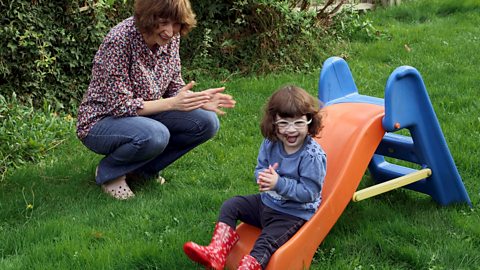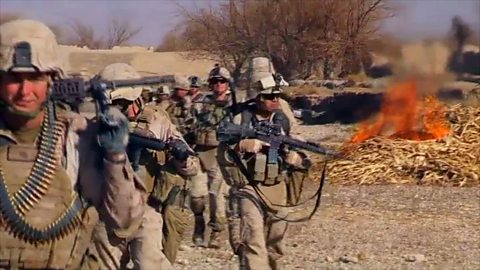Video summary
An exploration of the ethics around capital punishment. Representatives of different faiths and religions explain their perspective on the death penalty.
Tom's cousin Lynn was kidnapped, raped and brutally murdered at the age of 17.
Her murderer was sentenced to death and executed by the State of Florida. Tom believes that the death penalty has brought justice for Lynn, and closure for himself and his family.
Joe was charged with aggravated murder and sentenced to death in the State of Ohio. After spending 22 years on death row, his case was dismissed and he was exonerated. He now vigorously campaigns against the death penalty.
This poses the question: What are the rights and wrongs of the death penalty?
The death penalty was abolished in the UK in 1965, however the issue is still current worldwide.
For example, in the USA, 28 states retain the death penalty. In some countries, such as the Philippines, there are calls to reinstate capital punishment, to tackle drugs related crime. Despite the continued development of human rights legislation, the death penalty is used as a means of punishment, within several justice systems. This underpins a widespread belief that criminals forfeit their rights on commission of a crime.
This short film explores the moral and practical issues of capital punishment, from both religious and non-religious perspectives. It provides students with the opportunity to evaluate a range of beliefs, prior to consolidating their own viewpoint.
This clip is taken from the │╔╚╦┐ý╩Í Two series, Matters of life and death.
PLEASE NOTE: THIS FILM CONTAINS DISCUSSIONS ON VIOLENT CRIME AND CAPITAL PUNISHMENT. TEACHER REVIEW IS RECOMMENDED PRIOR TO USE IN CLASS.
Teacher Notes
The clip provides two contrasting views towards the death penalty.
TomÔÇÖs cousin Lynn was kidnapped, raped and brutally murdered at the age of 17. Subsequently, David Gore was arrested and charged with the murder of Lynn and five other victims. His guilt was established through an eyewitness and a confession to the crimes. Tom believes that in cases such as these, the death penalty should be given as a sentence. If someone deprives someone else of their liberties, they deserve to die. Tom attended David GoreÔÇÖs execution and describes feelings of finality and peace. He states that no one is happy to see another human die, however it was justified and gave the family closure. Tom believes that the argument that innocent people will be put to death is now without basis. This is specifically due to advancements in criminal investigations, particularly the pivotal role of DNA. He believes that prison simply is not enough of a punishment for someone who destroys a life. People should be punished according to the severity of their crime.
Contrastingly, Joe believes that the death penalty should be abolished, as mistakes will always be made. He speaks from direct experience of a significant injustice, having spent 22 years on death row for a crime that he did not commit. Joe was arrested for aggravated murder and sentenced to death after the shortest trial in the history of the USA ÔÇô just two and a half days. On death row, he was in solitary confinement for 23 hours per day. He used this time to study the law and after six years of legal processes, he was finally set free. On average, for every ten prisoners who are executed in America, one is released after appeal. Joe believes that these statistics highlight the flawed system that is still being implemented. Life in prison is a far better alternative than the death penalty, people suffer for longer and must live with the guilt of their crimes. Additionally, the justice system should not be built on revenge and the act of taking a life in this way is barbaric. As a Christian, Joe believes that life is sacred and only God has the right to take it away. He spends his time travelling around Ohio, delivering speeches against the use of capital punishment, supported by his personal testimony.
The clip concludes with representatives from various faiths and humanist societies, explaining their views on the death penalty and linking them to their belief systems.
Before watching the film:
Issues addressed within the clip may well personally affect students within the classroom.
You should preview the footage in order to familiarise yourself with the content and enable you to pre-warn students of its sensitive nature. Specifically, there is footage taken from a crime scene.
There are also references to rape, murder and torture which some students may find distressing. You will need to approach with sensitivity and remind pupils to be empathetic towards others were there are differing viewpoints.
You may find it useful to introduce or revisit ÔÇÿethicsÔÇÖ prior to watching the clip. You may wish to explore the following:
- What is an ÔÇÿethical issueÔÇÖ?
- What should form the basis of our ethical decisions?
- An explanation of key terms such as capital punishment, death penalty, justice and exoneration.
During clip:
You may find it beneficial to pause the video in order to check for understanding. The following questions make useful discussion points:
- How might Tom have felt, having learnt that his cousin had been murdered?
- Is it ever possible to be 100 percent certain that someone has committed a crime? If so, on what basis?
- What crimes, if any, should warrant the death penalty and why?
- Is the death penalty ÔÇÿan easy way outÔÇÖ for criminals?
- Why do people sentenced to death spend so much time waiting to die on death row?
- Why do you think that the families of the victim may wish to attend the execution?
- What impact might watching the execution have on the victimÔÇÖs family?
- Who carries out the executions and how might this affect them?
- Do you support the saying ÔÇÿa life for a lifeÔÇÖ?
- How is ÔÇÿjusticeÔÇÖ best achieved?
- Do criminals have rights or are they forfeited on commission of a crime?
- Does anyone have the right to take the life of another human?
- Is the death penalty barbaric?
- What causes people to commit crimes ÔÇô is society ever to blame and if so, should this change our attitudes towards the death penalty?
- Does putting a criminal to death resolve anything?
- Is the use of lethal injection humane?
- Why isnÔÇÖt the death penalty a deterrent for criminals?
- Can every criminal be rehabilitated and reintegrated safely into society?
- Is it fair to inflict grief on the family of the offender by sentencing them to death?
- Do you think that the death penalty should be reinstated in the UK?
Following on:
You could support students in consolidating their learning, deepening their understanding of the issue and applying exam skills in context. Suggested tasks:
- Lead a class discussion or debate around the question ÔÇÿShould the death penalty be reinstated in the UK?ÔÇÖ. This could be informal or more structured. The class could be divided into smaller groups and students could be asked to research arguments to represent a particular viewpoint e.g. Humanist, Hindu, Sikh. Alternatively, students could be asked to do their own independent research with some guidance, in order to participate in a free-flowing debate. This could also be carried out in the form of a ÔÇÿsilentÔÇÖ debate, having students write down their responses on large sheets of paper or tables. Students could be encouraged to respond to each other to develop evaluative skills.
- Ask students to evaluate the aims of punishment: Rehabilitation, protection, deterrence and retribution. They could consider which aims are met with use of the death penalty, prior to comparing it to other types of punishment.
- Signpost students to pressure groups attempting to abolish or reinstate the death penalty. Students could determine the beliefs which underpin each viewpoint and provide examples of action that each has taken in order to advance their cause.
- Carry out a discussion surrounding the causes of crime and ask students to decide whether this should play a role in determining an appropriate sentence. To what extent is society responsible for the existence of certain types of crime?
- Carry out an in-depth study into the way in which capital punishment is used in the USA. Use supporting materials such as documentaries to provide testimony from those involved in the process (victim's family, offender, prison staff, offenderÔÇÖs family and the wider community). They may also look at issues surrounding supply of the drug which is used within the lethal injection and how this is delaying and potentially preventing executions.
- Students could compare the way in which capital punishment is implemented in both democratic and non-democratic countries. They could evaluate their findings and present these verbally, drawing conclusions from their research.
- Students could research the case of Mark Stroman and Rais Bhuiyan as an example of forgiveness and reconciliation. They could also investigate the principles of restorative justice and how this approach is used in the UK and other countries.
- In relation to religious responses, students could be presented with a collection of scripture or religious teachings relating to the religions which they are required to study. This could be in the form or a card sort (separating those arguments for and against) and they could then be asked to explain the rationale behind their choices.
- Organise and deliver a carousel task, allowing students to collate information regarding different religious viewpoints. This could be related to specific questions or they could be asked to fill out a grid which they could use to compare beliefs.
- Facilitate an in-depth study into one religious perspective (individually or in groups) and present this to the class who could take notes.
- Ask students to research and evaluate the criminal justice system. They could look at miscarriages of justices and racial prejudice for example, within those countries that are retentionists. More specifically, they could also study the case of Lisa Montgomery who was executed in the USA in 2020.
- Students could be asked to complete a ÔÇÿVenn DiagramÔÇÖ in which they identify similarities and differences between two religious viewpoints.
This short film will be relevant for teaching Religious Studies.
This topic appears in OCR, Edexcel, AQA, WJEC KS4/GCSE in England and Wales, CCEA GCSE in Northern Ireland and SQA National 4/5 in Scotland.
Is it ever right to experiment on animals? video
Christina's and James' life experiences have left them on different sides of this debate. Representatives of different faiths and religions are also featured, explaining their perspectives on animal testing.

Is it okay to have a child to save another? video
We hear from two people with opposing views before representatives of different faiths and religions explain their perspectives.

What are the rights and wrongs of abortion? video
An exploration of some of the ethical and moral questions around the issue of abortion, focusing on Anna and Marie, whose life experiences have left them on contrasting sides of the debate.

When is it right to go to war? video
We hear responses to this question from two people with contrasting opinions. This is followed by various perspectives on the question from religious and humanist leaders.
